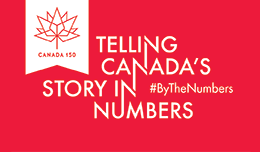Agricultural Water Survey, 2016
Archived Content
Information identified as archived is provided for reference, research or recordkeeping purposes. It is not subject to the Government of Canada Web Standards and has not been altered or updated since it was archived. Please "contact us" to request a format other than those available.
Released: 2017-09-08
Canadian agricultural producers used just over 2 billion cubic metres of water for irrigation in 2016, about 22% higher than in 2014.
Irrigation volumes followed the precipitation patterns throughout Canada's growing season in 2016. From April to the end of June, total irrigation throughout Canada increased from 2014. For the rest of the growing year, volumes were slightly lower in July and August and were up again in September and October.
Alberta's irrigation water volume (1.4 billion cubic metres) was up by 13% from 2014 to 2016, accounting for just under three-quarters of the total irrigation water applied to crops.
Field (56%) and forage (34%) crops used the most irrigation water across the country, with vegetable (6%) and fruit (4%) crops making up the rest.
The majority of farms (7,550 farms or 92%) reported no issues preventing them from irrigating in 2016, but some producers did stop or forego irrigation, citing a shortage of water (1,074 farms) and poor water quality (617 farms). In 2016, 802 farms did not irrigate because of other reasons, such as having received enough rain and/or flooding.
Majority of irrigated land is in Alberta
Nationally, more than 688 000 hectares of land received irrigation in 2016, about 18% higher than was reported in 2014. Provincially, farmland in Alberta received the most irrigation (489 937 hectares), representing about 71% of the total area of irrigated land in Canada.
Canadian farmers reported that irrigated area was made up mostly of field (386 535 hectares) and forage (236 143 hectares) crops. Vegetable (39 389 hectares) and fruit (26 712 hectares) crops were also irrigated.
Most off-farm water sources are from provincial authorities
Off-farm water was the most common source for irrigating crops in Canada, accounting for just under 70% of total irrigation water. On-farm surface water was the second largest source at 25%, with the remaining 5% coming from on-farm ground water.
Off-farm water was the predominant water source in Western Canada, while the majority of irrigation water in Eastern Canada came from on-farm, surface water sources.
A large portion of the off-farm irrigation water in Canada was provided by provincial sources, most notably in Alberta (96%) and Saskatchewan (88%). Irrigation water comes from a variety of sources, such as private irrigators, irrigation districts, projects or authorities.

In celebration of the country's 150th birthday, Statistics Canada is presenting snapshots from our rich statistical history.
Created by an Act of Parliament in 1935, the Prairie Farm Rehabilitation Administration (PFRA) played a major role in shaping the face of the region. The PFRA was born at a time when a deep and prolonged drought was affecting the Prairie provinces, producers were abandoning their farms and the land was literally blowing away. It was the height of the aptly named "Dirty Thirties." Something had to be done to keep farmers on the land.
The PFRA has helped promote soil enrichment and conservation on the rural prairies for over seven decades. Nowhere, though, was its impact felt more than in the promotion and development of water supply projects all across the Prairies, including providing both technical and monetary assistance for individual farm water supply projects such as dugouts, wells and pipelines. At the same time, it worked on a larger, more diverse scale with projects like the South Saskatchewan River Project that included the Gardiner Dam and Lake Diefenbaker, which today supplies drinking water to about half of the population of Saskatchewan.
Note to readers
The Agricultural Water Survey gathered information on irrigation water use, irrigation methods and practices and sources and quality of water used for agricultural purposes on Canadian farms during the 2016 growing season (April 1 to October 31, 2016). This survey is part of the Canadian Environmental Sustainability Indicators program.
The volume of water is reported in cubic metres. One cubic metre equals one thousand litres.
The area of land that received irrigation refers to land area that actually received irrigation. Land area that had the capacity to be irrigated but did not receive irrigation is not included.
The 2016 survey estimates for both irrigation volume and area of land that received irrigation showed rates that varied widely across regions. Differences in weather patterns, crop types and farming practices can all lead to these variations.
Contact information
For more information, or to enquire about the concepts, methods or data quality of this release, contact us (toll-free 1-800-263-1136; 514-283-8300; infostats@statcan.gc.ca) or Media Relations (613-951-4636; statcan.mediahotline-ligneinfomedias.statcan@canada.ca).
- Date modified:


